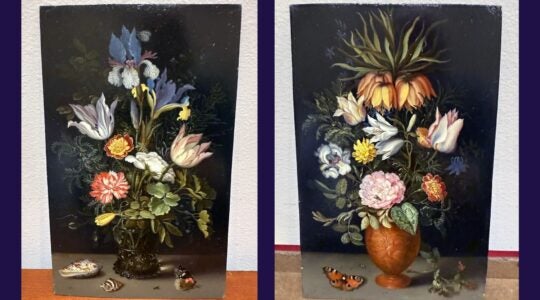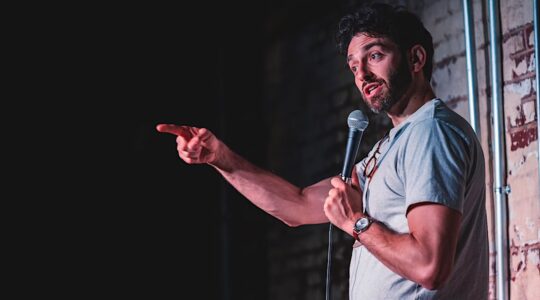The New York Times visits the new Jewish museum in London:
Two converted buildings and a former piano factory in the Camden Town neighborhood have been joined to create four permanent galleries offering a modest but stunning array of Jewish ritual objects, a broad history of the Jews in England, a look at early-20th-century Jewish immigration, and a glimpse of the Holocaust through the life of a single survivor.
The exhibits incorporate films, interactive displays, case histories and activities for children. There are ritual objects like an 18th-century silver and coral Torah case from Iraq, as well as equipment from one of the East End’s last Jewish bakeries and unclaimed items from a “deed box” of the Jews’ Temporary Shelter that housed new immigrants in early-20th-century London.
But in the midst of its clear-eyed and unsentimental exploration of the Jewish past in England, there is that recurring tension. Here, for example, is a pair of boxing shorts worn by Harry Mizler, Britain’s lightweight boxing champion in 1934: on one leg is sewn a Jewish star, on the other a Union Jack.
This declaration of hyphenated identity and dual loyalty, now a familiar aspect of ethnic self-consciousness, was not always readily welcomed. After World War I, for instance, accusations were made that Jews did not serve or show sufficient military loyalty; in response, an enormous 1922 book cataloged the contrary. Displayed here, it is called “British Jewry: Book of Honour.”
So, too, we learn about Benjamin Disraeli, who served in Parliament beginning in 1838 (and later became the first Jewish-born prime minister), only because he had been baptized at an early age. His co-religionist by birth, Lionel de Rothschild, was elected to Parliament four times, but couldn’t take his seat until 1858, when he was no longer required to swear “on the true faith of a Christian.”
JTA has documented Jewish history in real-time for over a century. Keep our journalism strong by joining us in supporting independent, award-winning reporting.





